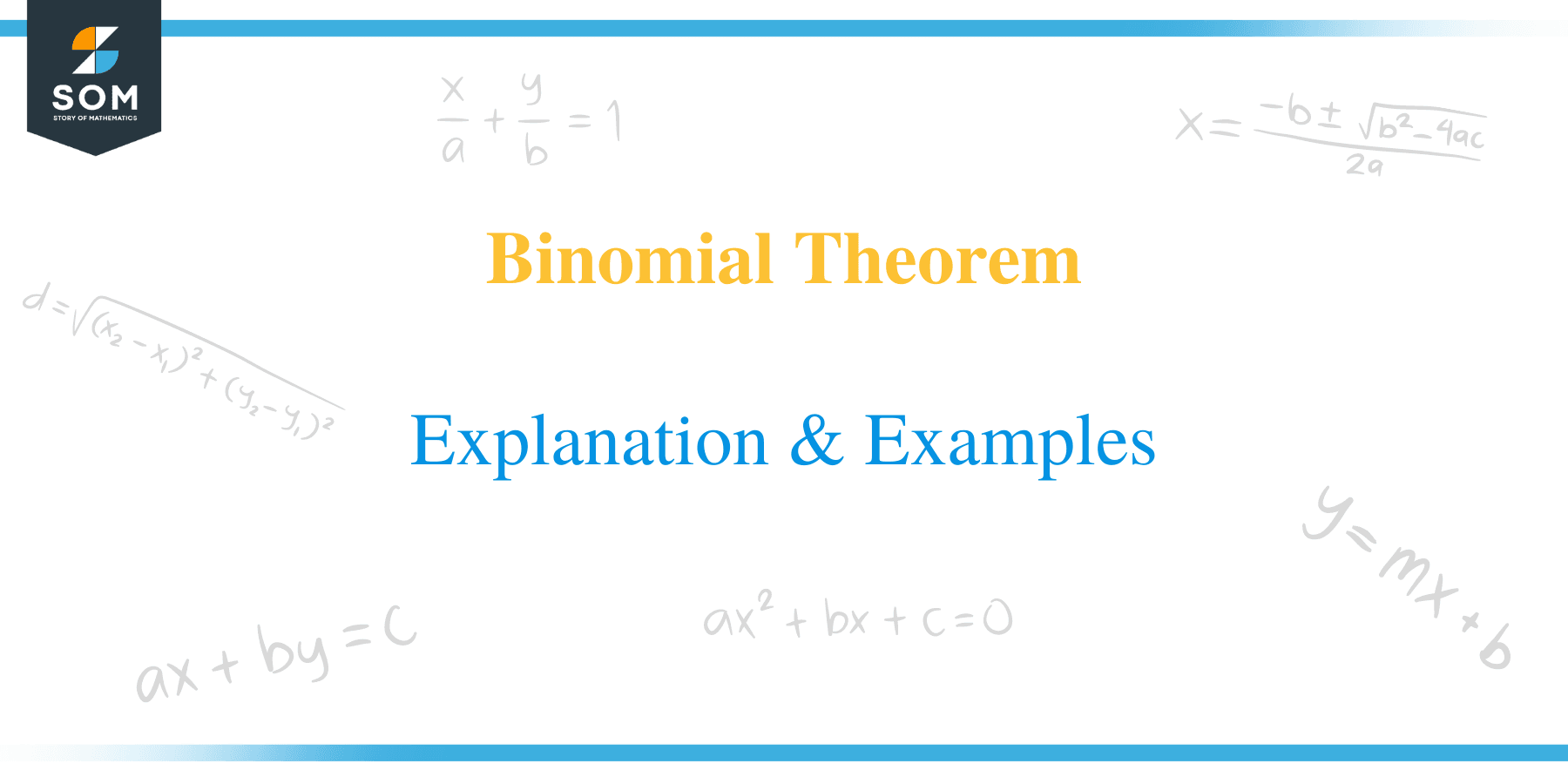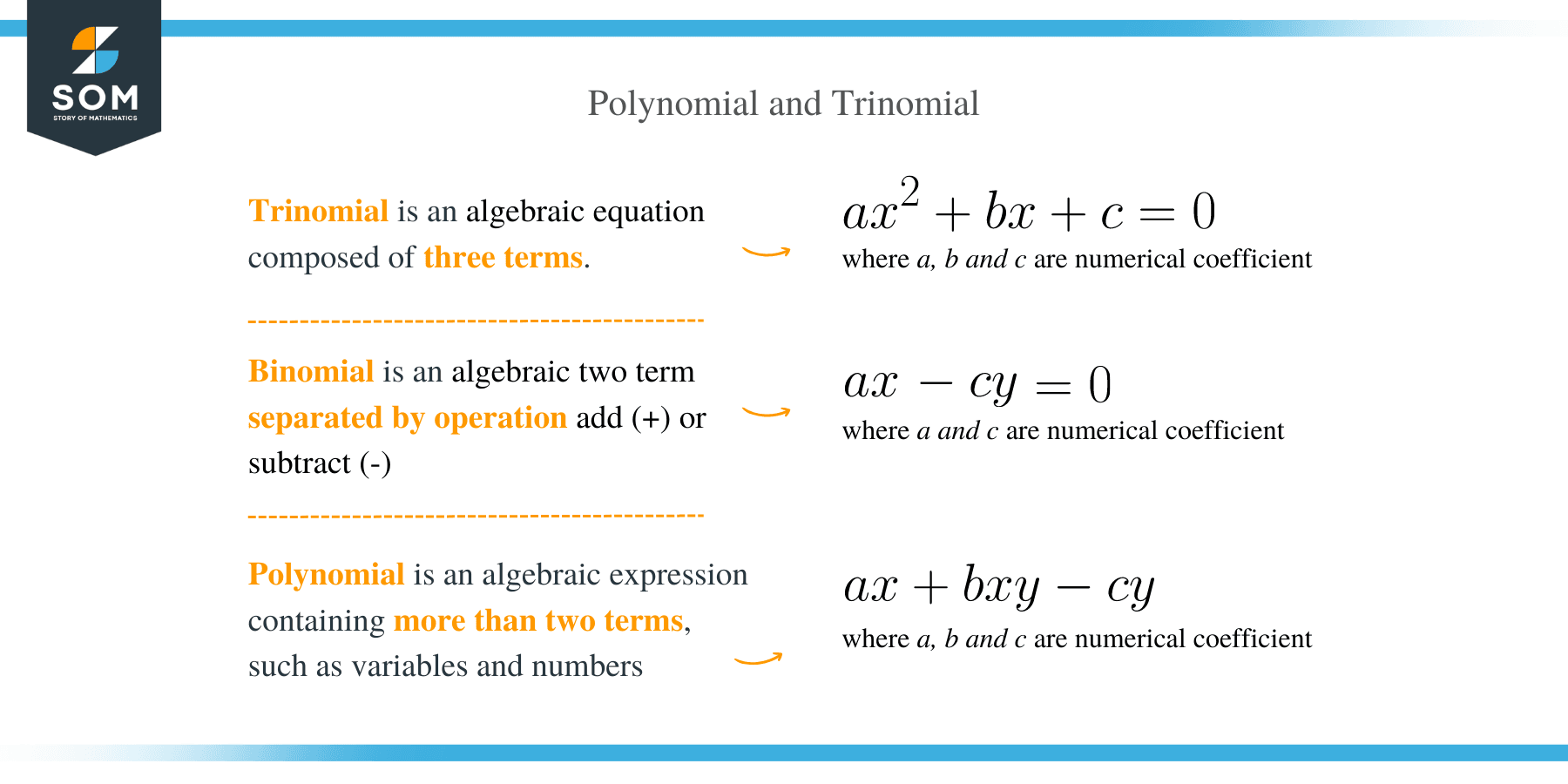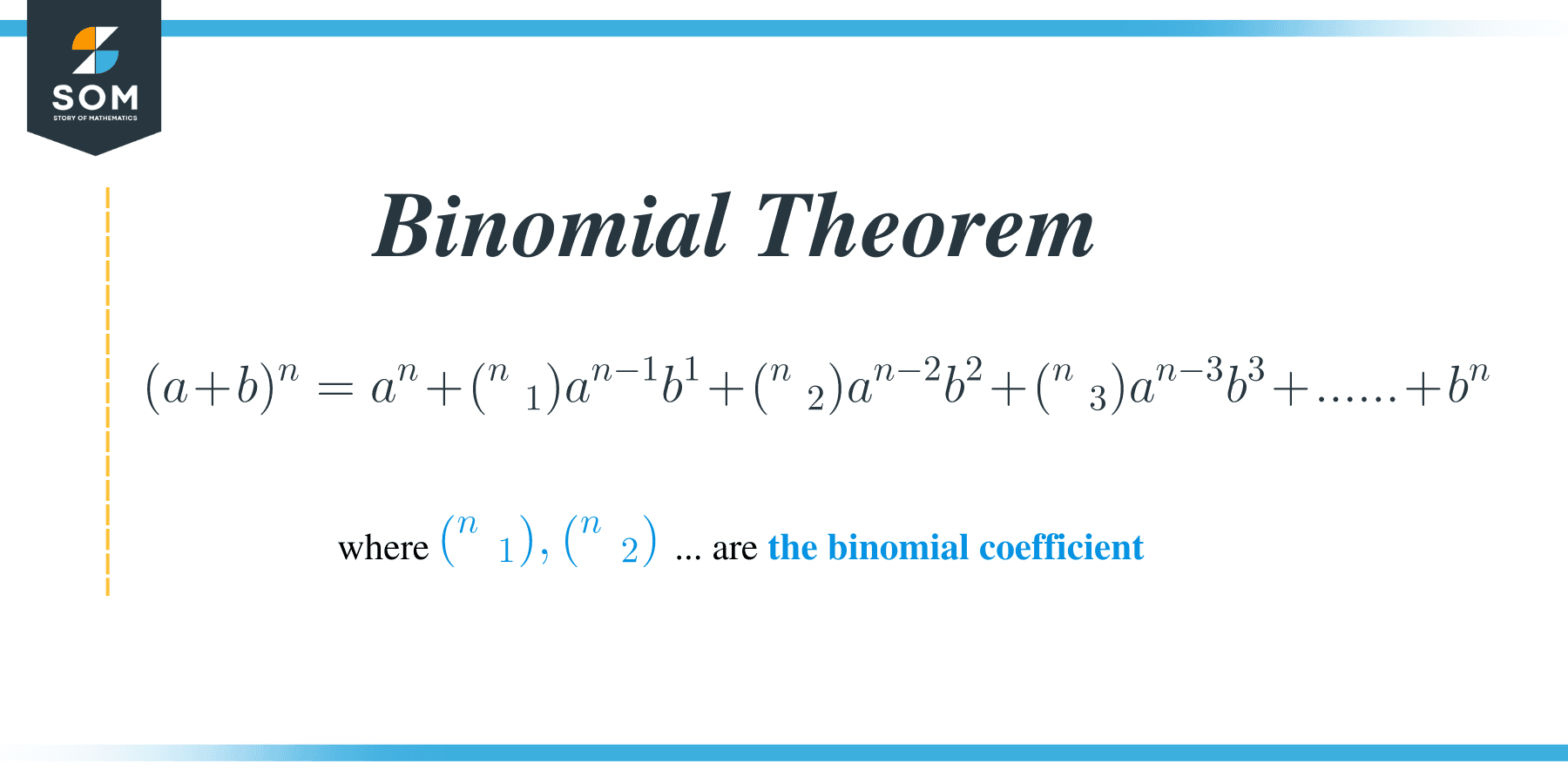JUMP TO TOPIC
Binomial Theorem – Explanation & Examples
 A polynomial is an algebraic expression made up of two or more terms subtracted, added, or multiplied. A polynomial can contain coefficients, variables, exponents, constants, and operators such as addition and subtraction. There are three types of polynomials, namely monomial, binomial and trinomial.
A polynomial is an algebraic expression made up of two or more terms subtracted, added, or multiplied. A polynomial can contain coefficients, variables, exponents, constants, and operators such as addition and subtraction. There are three types of polynomials, namely monomial, binomial and trinomial.
A monomial is an algebraic expression with only one term, while a trinomial is an expression that contains exactly three terms.

What is a binomial expression?
In Algebra, a binomial expression contains two terms joined by either addition or subtraction sign. For instance, (x + y) and (2 – x) are examples of binomial expressions.
Sometimes, we may need to expand binomial expressions as shown below.
(a + b)0 = 1
(a + b)1 = a + b
(a + b)2 = a2 + 2ab + b2
(a + b)3 = a3 + 3a2b + 3ab2 + b3
(a + b)4 = a4 + 4a3b + 6a2b2 + 4ab3 + b4
(a + b)5 = a5 + 5a4b + 10a3b2 + 10a2b3 + 5ab4 + b5
You realized that expanding a binomial expression by direct multiplication as shown above is quite cumbersome and inapplicable for larger exponents.
In this article, we will learn how to use the Binomial theorem to expand binomial expression without having to multiply everything out the long way.
What is the Binomial Theorem?
The traces of the binomial theorem were known to human beings since the 4th century BC. The binomial for cubes were used in the 6th century AD. An Indian mathematician, Halayudha, explains this method using Pascal’s triangle in the 10th century AD.
The clear statement of this theorem was stated in the 12th century. The mathematicians take these findings to the next stages till Sir Isaac Newton generalized the binomial theorem for all exponents in 1665.
The Binomial Theorem states the algebraic expansion of exponents of a binomial, which means it is possible to expand a polynomial (a + b) n into the multiple terms.
Mathematically, this theorem is stated as:
(a + b) n = an + (n 1) an – 1b1 + (n 2) an – 2b2 + (n 3) an – 3b3 + ………+ b n
where (n 1), (n 2), … are the binomial coefficients.
Based on the above properties of the Binomial Theorem, we can derive the Binomial Formula as:
(a + b) n = an + nan – 1b1 + [n (n – 1)/2!] an – 2b2 + [n (n – 1) (n – 2)/ 3!]an – 3b3 + ………+ b n
Alternatively, we can express the Binomial formula as:
(a + b) n = nC0 an + nC1 an – 1b + nC2 an – 2b2 + nC3 an – 3b3+ ………. + n C n b n
Where (n r) = n Cr = n! / {r! (n – r)!} and (C) and (!) are the combinations and factorial respectively.
For example:
- 3! = (3)(2)(1) =6
- 5! = (5)(4)(3)(2)(1) =120
- 4! /2! = (4)(3)(2)(1)/(2)(1) =12
- 10C6 = 10! / (10 – 6)! 6! = 10! / 4! 6! = (1 x 2 x 3 x 4 x 5 x 6 x 7 x 8 x 9 x 10) / 1 x 2 x 3 x 4 x 1 x 2 x 3 x 4 x 5 x 6 = 7 x 8 x 9 x 10 /1 x 2 x 3 x 4 = 7 x 3 x 10 = 210
How to use the Binomial Theorem?
There are a few things which you need to remember while applying the Binomial Theorem.
These are:
- The exponents of the first term (a) decreases from n to zero
- The exponents of the second term (b) increases from zero to n
- The sum of the exponents of a and b is equal to n.
- The coefficients of the first and last term are both 1.
Let’s use Binomial Theorem on certain expressions to practically understand the theorem.
Example 1
Expand (a + b)5
Solution
⟹ (a + b) 5 = an + (51) a5– 1b1 + (5 2) a5 – 2b2 + (53) a5– 3b3 + (54) a5– 4b4 + b5
= a5 + 5a4b + 10a3b2 + 10a2b3 + 5ab4 + b5
Example 2
Expand (x + 2)6 using the Binomial Theorem.
Solution
Given a = x;
b = 2 and n = 6
Substitute the values in binomial formula
(a + b) n = an + nan – 1b1 + [n (n – 1)/2!] an – 2b2 + [n (n – 1) (n – 2)/ 3!]an – 3b3 + ………+ b n
⟹ (x + 2) 6 = x6 + 6x5(2)1 + [(6)(5)/2!] (x4) (22) + [(6)(5)(4)/3!] (x3) (23) + [(6)(5)(4)(3)/4!] (x2) (24) + [(6)(5)(4)(3)(2)/5!] (x) (25) + (2)6
= x6 + 12x5 + 60x4 +160x3 + 240x2 + 192x + 64
Example 3
Use the binomial theorem to expand (2x + 3)4
Solution
By comparing with the binomial formula, we get,
a = 2x, b =3 and n = 4.
Substitute the values in the binomial formula.
⟹ (2x + 3) 4 = x4 + 4(2x)3(3) + [(4)(3)/2!] (2x)2 (3)2 + [(4)(3)(2)/4!] (2x) (3)3 + (3)4
= 16 x4 + 96x3 +216x2 + 216x + 81
Example 4
Find the expansion of (2x − y)4
Solution
(2x − y)4 = (2x) + (−y)4 = (2x)4 + 4(2x)3 (−y) + 6(2x)2(−y)2 + 4(2x) (−y)3+ (−y)4
= 16x4 − 32x3y + 24x2y2 − 8xy3 + y4
Example 5
Use the Binomial Theorem to expand (2 + 3x)3
Solution
By comparing with the Binomial formula,
a = 2; b = 3x and n = 3
⟹ (2 + 3x) 3 = 23 + (31) 22(3x)1 + (32) 2(3x)2 + (3x)3
= 8 + 36x + 54x2 + 27x3
Example 6
Expand (x2 + 2)6
Solution
(x2 +2)6 = 6C0 (x2)6(2)0 + 6C1(x2)5(2)1 + 6C2(x2)4(2)2 + 6C3 (x2)3(2)3 + 6C4 (x2)2(2)4 + 6C5 (x2)1(2)5 + 6C6 (x2)0(2)6
= (1) (x12) (1) + (6) (x10) (2) + (15) (x8) (4) + (20) (x6) (8) + (15) (x4) (16) + (6) (x2) (32) + (1)(1) (64)
= x12 + 12 x10 + 60 x8 + 160 x6 + 240 x4 + 192 x2 + 64
Example 7
Expand the expression (√2 + 1)5 + (√2 − 1)5 using the Binomial formula.
Solution
(x + y)5 + (x – y)5 = 2[5C0 x5 + 5C2 x3 y2 + 5C4 xy4]
= 2(x5 + 10 x3 y2 + 5xy4)
= (√2 + 1)5 + (√2 − 1)5 = 2[(√2)5 + 10(√2)3(1)2 + 5(√2) (1)4]
=58√2
